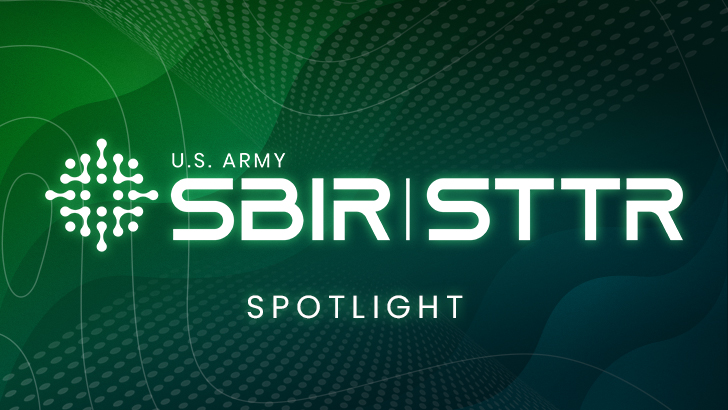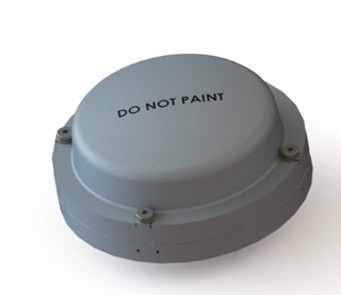

By Anna Volkwine and Hawa Jack, Army Innovation Programs
WASHINGTON – Mayflower Communications aims to enhance Global Positioning System capabilities for U.S. Army Soldiers in contested environments. With support from the Army Small Business Innovation Research and Small Business Technology Transfer Program, the company develops advanced GPS technologies to ensure Soldiers have reliable position, navigation and timing data when GPS is unavailable.
Researchers from Draper Laboratories founded Mayflower in 1986 to develop cost-effective, high-performance radio navigation and GPS anti-jam solutions, including size, weight and power products for tactical vehicles, aircraft, submarines and space vehicles.
One notable solution, the Multi-Platform Anti-Jam GPS Navigation Antenna, transitioned to the Army to improve situational awareness for Soldiers in aircraft. Mayflower’s MAGNA, a high-performance GPS antenna system, enhances signal reception in aircraft while mitigating interference and jamming threats. Despite its small size – only 3.5 inches in diameter – MAGNA provides reliable, high-quality signal reception even in degraded conditions.
“The Army had the foresight to grow the MAGNA program and make it an even bigger, better program,” said Joseph Thomas, business development director of Mayflower Communications. “We were able to use the Army SBIR funding to move its development forward.”
Army SBIR funding uncovers new tech requirements
Mayflower’s transition journey began in 2007 when it secured a competitive research and development contract for the Small Antenna System program. Funded by the Air Force GPS Directorate and managed by the Navy, this Broad Agency Announcement program supported Army Aviation Platform GPS anti-jam requirements.
As a result, Mayflower developed an SAS for Army rotary-wing aircraft. The Navy adopted Mayflower’s technology for submarines with the Submarine Anti-Jam GPS Enhancement. Based on Navy requirements to develop a multi-platform solution, SAGE ultimately led to the development of MAGNA.
Although the Navy eventually lost funding for MAGNA, the company received an Army SBIR Phase I award valued at nearly $100,000 for the Global Antenna Jammer Avoidance System in 2014. This technology provides advanced anti-jamming and anti-spoofing protection for GPS signals, ensuring Soldiers maintain accurate navigation. Utilizing this funding, Mayflower analyzed the feasibility of the proposed GAJAS system to mitigate interferences from hostile jammers and attack transmitters, ensuring GPS receivers can effectively receive signals with a SWaP form factor.
Following the Army SBIR Phase I, Mayflower progressed through Phase II and Phase II Enhancement contract awards in 2015 and 2016 to demonstrate the GAJAS prototype. Thomas noted that the Army SBIRs resulted in new requirements for the technology. Mayflower combined the GAJAS with an improved version of the MAGNA, including direction of arrival capabilities, to meet Army needs and deliver the system.
“The Army SBIR Program is how GAJAS and the MAGNA Program came together; we used the GAJAS SBIRs to take the MAGNA into full-rate production,” said Thomas. “The Army, after our SBIR Phase II prototype, had the vision to take the technology, fully qualify it, and begin integrating it across all of their aircrafts.”
Mayflower successfully completed its Army SBIR contracts and laid the groundwork for a transition award in 2017. GAJAS went into full-rate production with Program Executive Office Aviation in a cost-plus-fixed-fee contract for non-recurring engineering and fabrication of production representative articles for the MAGNA solution. In 2020, Mayflower received an indefinite-delivery, indefinite-quantity transition award with PEO Aviation worth over $56 million, followed by a delivery order for 4,800 units under the existing IDIQ.
As part of the IDIQ, PEO Aviation will integrate MAGNA technology into platforms such as unmanned aerial vehicles, Gray Eagle, future vertical lift, fixed-wing transport and more.
At the end of 2022, the Project Management Office for Aviation Mission Systems and Architecture tested MAGNA. PM-AMSA conducted five successful flights with MAGNA technology and Vertical Guidance, Embedded Global Positioning System/Inertial Navigation System technology. The combination of these two technologies provided a resilient assured PNT solution for Army aviation platforms, optimizing mission performance in GPS-contested environments.
Mayflower continues to deploy upgrades to enhance performance without increasing its size or weight, with ongoing orders through the PEO Aviation IDIQ contract.
In 2023, Mayflower scored an additional bonus – worth nearly $20 million – via the Office of the Undersecretary of Defense for Research and Engineering Accelerate the Procurement and Fielding of Innovative Technologies (APFIT) Program. APFIT quickly transitions technologies from development into production and accelerates the fielding of those technologies to Soldiers. Under APFIT, Mayflower accelerates the procurement of sufficient quantities of the MAGNA to achieve optimum price break of anti-jam antennas for fixed-wing and rotary-wing aircrafts, with future plans to integrate with aerial systems across the Department of Defense.
Army investments underscore modernization priorities
The Army’s SBIR investment in Mayflower’s solutions underscores its commitment to advancing technologies that ensure reliable, assured PNT data across various platforms to support Soldiers in GPS-compromised environments. The Army took the initiative to bring the technology to full-rate production, allowing widespread use across Army aircraft.
Meanwhile, the Navy rejoined the MAGNA program in 2017 by integrating MAGNA onto Naval aircrafts and SAGE on its submarines. In 2022, Mayflower received technical standard order authorization from the U.S. Federal Aviation Administration for MAGNA on both military and civilian aircraft, increasing the safety and efficiency of air travel for the aviation industry.
“By delivering high-quality, robust and cost-effective GPS anti-jam solutions, we continue to support the U.S. military and potentially civilian markets,” Thomas said.

About the Army SBIR|STTR Program
Army SBIR continuously releases funding opportunities, including Phase I funding for commercially viable, feasible, and technically sound solutions. Firms with mature technologies meeting Phase I requirements can advance to Phase II or go directly to Direct to Phase II contracts. Throughout the process, technical, acquisition, and operational Army experts guide businesses to align their innovations with the Army’s critical needs.
Army STTR integrates small businesses in the Army innovation ecosystem by partnering them with universities, federally funded research and development centers, or qualified non-profit research institutions, with small businesses as the prime contractors. Small businesses must act as prime contractors, performing at least 40 percent of the work while research partners perform at least 30 percent.
ASA(ALT) leverages innovative technologies to give Soldiers a decisive advantage in any environment by developing, acquiring, fielding, and sustaining the world’s finest equipment and services. For more information, visit the ASA(ALT) web page and follow @ArmyASAALT.
Stay Updated
Subscribe to email updates or check back on the Army SBIR|STTR website. Follow us on Facebook, X (formerly Twitter) and LinkedIn. For inquiries, contact us at the Army SBIR|STTR mailbox and the Army xTech mailbox.
